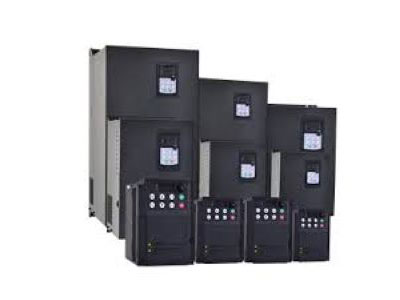What is a VFD Used For?
Key Takeaway
A VFD, or Variable Frequency Drive, is used to control the speed and torque of electric motors. By varying the input voltage and frequency, VFDs can precisely adjust motor performance. Common applications include controlling pumps, fans, and conveyor belts in industrial plants. VFDs help improve energy efficiency, reduce wear and tear on equipment, and enhance process control. They are essential in industries requiring variable motor speeds and increased operational flexibility.

Primary Applications of VFDs
Variable Frequency Drives (VFDs) are used primarily to control the speed and torque of electric motors. By adjusting the frequency and voltage supplied to the motor, VFDs enable precise control over motor performance. This capability is essential in applications requiring variable speed and load control. For example, in HVAC systems, VFDs regulate the speed of fans and pumps to match the varying demands of the building, ensuring optimal energy use and comfort levels. Similarly, in manufacturing, VFDs control conveyor speeds to synchronize with production processes, enhancing efficiency and reducing energy consumption. The primary applications of VFDs span a wide range of industries, highlighting their versatility and importance.

VFDs in Pump and Fan Operations
Variable Frequency Drives (VFDs) are extensively used in controlling pumps and fans, offering significant energy savings by adjusting motor speed to match the actual demand. For example, in a water pumping system, a VFD can reduce the speed of the pump motor when water demand is low, conserving energy and reducing wear and tear on the equipment. Similarly, in ventilation systems, VFDs adjust fan speeds based on airflow requirements, ensuring optimal performance while minimizing energy consumption. This approach not only enhances efficiency but also extends the lifespan of the equipment, making VFDs indispensable in these operations.
By avoiding the need for motors to run at full speed continuously, VFDs help in maintaining the system’s components and lowering maintenance costs. In HVAC systems, for instance, the ability to modulate fan and pump speeds according to real-time needs translates into improved indoor air quality and comfort. VFDs thus play a crucial role in achieving energy efficiency and operational longevity in pump and fan applications, showcasing their versatility and effectiveness in managing motor-driven systems.
You May Like to Read
Specialized Uses in Different Industries
Variable Frequency Drives (VFDs) demonstrate remarkable adaptability and effectiveness across various industries. In the mining industry, VFDs control the speed of conveyors and crushers, optimizing the processing of raw materials and significantly reducing energy costs. By managing the operational speed, VFDs help in achieving precise control over production processes, enhancing overall efficiency and safety.
In the food and beverage sector, VFDs regulate the speed of mixers, fillers, and packaging machines. This ensures consistency and quality in production, as the precise control over speed and torque helps maintain product standards. Similarly, in the oil and gas industry, VFDs manage the speed of drilling rigs and pumps, enhancing operational efficiency and safety. By controlling the speed of these critical components, VFDs reduce energy consumption and mechanical stress, leading to lower operational costs and extended equipment life.
Each industry leverages the unique capabilities of VFDs to address specific challenges, improve productivity, and enhance operational efficiency. The specialized applications of VFDs underline their critical role in modern industrial operations, making them a key component in diverse sectors.
The Role of VFDs in Automation and Control
In the realm of automation and control, Variable Frequency Drives (VFDs) are indispensable. They provide precise control over motor speed, crucial for automated processes that require varying speeds and precise timing. For example, in automated manufacturing lines, VFDs synchronize the speed of different machines, ensuring seamless operation and high productivity. This synchronization is essential to prevent bottlenecks and maintain a consistent workflow.
In robotics, VFDs control the speed and torque of robotic arms, allowing for precise movements and accurate positioning. This precision is vital for tasks that require exact placement and timing, such as assembly operations. The ability to integrate VFDs with control systems, like Programmable Logic Controllers (PLCs), further enhances their utility in automation. This integration allows for real-time adjustments and monitoring, optimizing performance and efficiency in automated environments. The dynamic control provided by VFDs enables automated systems to respond quickly to changing conditions, improving overall productivity and reliability in various industrial applications.
Economic Benefits of Implementing VFDs
The economic benefits of implementing Variable Frequency Drives (VFDs) are substantial. By optimizing motor speed and reducing energy consumption, VFDs can significantly lower operational costs. For instance, in HVAC systems, using VFDs to control fan and pump speeds can reduce energy use by up to 50%, leading to considerable savings on electricity bills. This reduction in energy consumption not only lowers utility costs but also contributes to sustainability efforts by reducing the carbon footprint of the facility.
Additionally, the precise control provided by VFDs reduces mechanical stress on equipment. This reduction in stress extends the lifespan of the machinery and decreases maintenance costs. Over time, the savings from reduced energy use and lower maintenance expenses can offset the initial investment in VFDs, resulting in a favorable return on investment. Furthermore, the improved efficiency and reliability of operations contribute to increased productivity and profitability. By enhancing the performance and longevity of motor-driven systems, VFDs present a smart economic choice for many industries, offering both immediate and long-term financial benefits.
Conclusion
In conclusion, Variable Frequency Drives (VFDs) are versatile and essential tools in various industrial applications. From controlling motor speed in HVAC systems to optimizing operations in specialized industries like mining and food processing, VFDs enhance efficiency, reduce energy consumption, and lower operational costs. Their role in automation and control underscores their importance in modern manufacturing and industrial processes. The economic benefits of implementing VFDs, including energy savings and extended equipment lifespan, make them a valuable investment. Understanding the diverse applications and advantages of VFDs is crucial for engineers and industry professionals aiming to improve operational efficiency and productivity.
